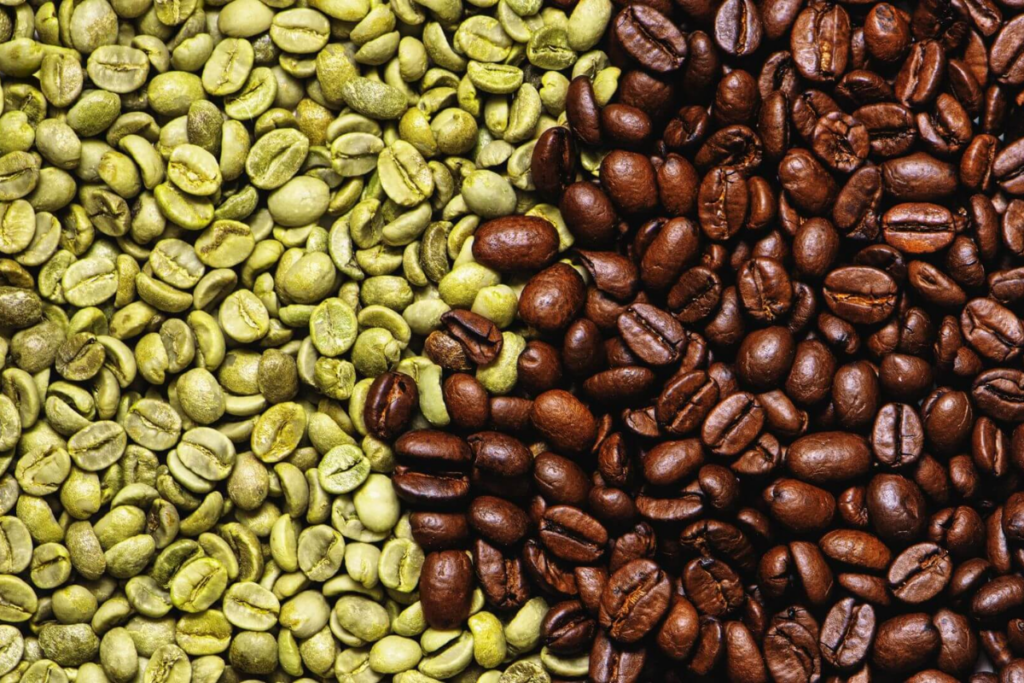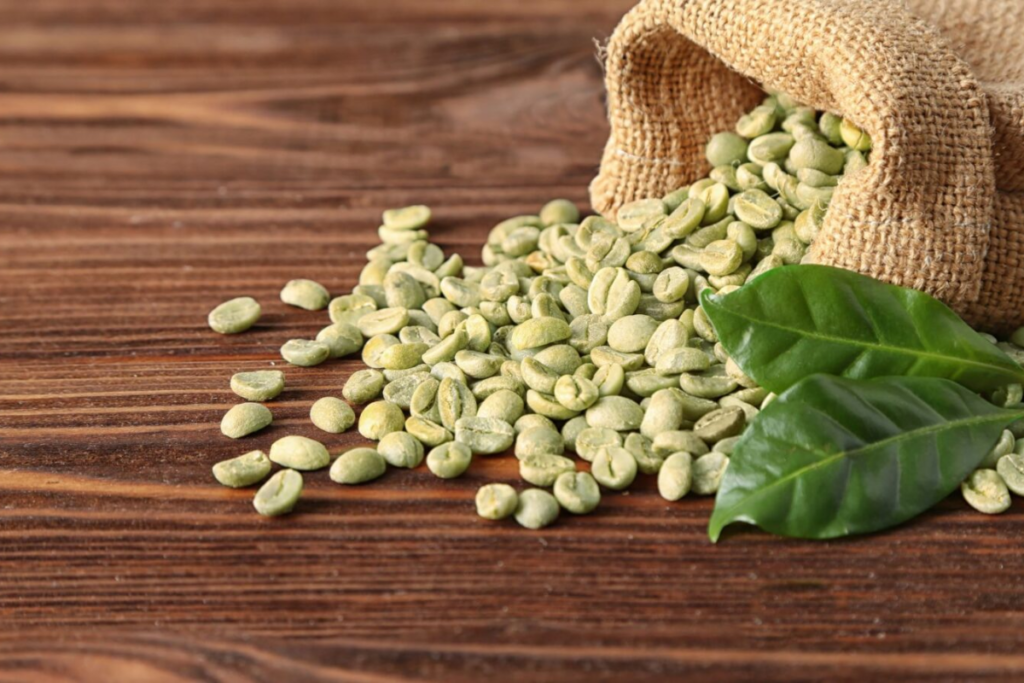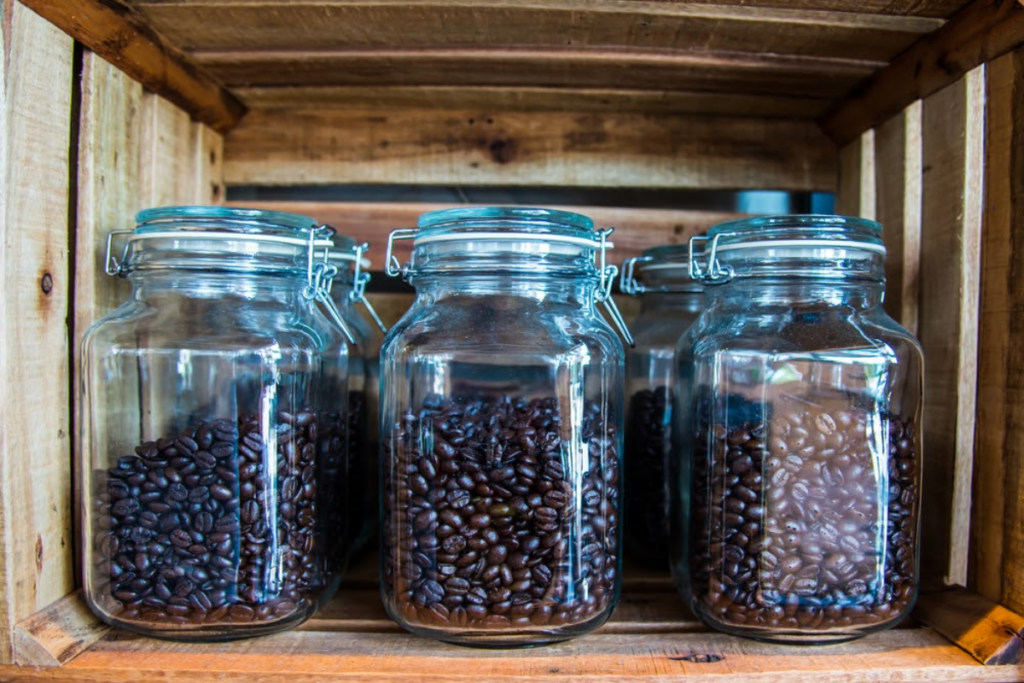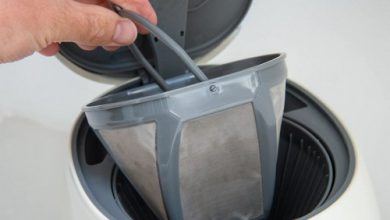How Long Do Green Coffee Beans Last? A Comprehensive Guide to Maximizing Freshness
How Long Do Green Coffee Beans Last
How long do green coffee beans last, the raw seeds of the Coffea plant, are the starting point for every cup of coffee. Unlike their roasted counterparts, green coffee beans can be stored for longer periods if maintained under optimal conditions. Knowing how long green coffee beans last and understanding the factors that influence their freshness is crucial for both coffee enthusiasts and professionals alike. Proper storage not only preserves the beans’ quality but also ensures that every cup of coffee brewed from them is flavorful and aromatic. This guide provides an in-depth look into the shelf life of green coffee beans and offers practical tips for maintaining their freshness.
What Are Green Coffee Beans?
Definition and Basic Information
Green coffee beans are the raw, unroasted seeds of the coffee cherry. These beans are harvested, processed, and dried before being stored and eventually roasted. Green coffee beans contain all the natural flavors and compounds that define the final taste of the coffee, making them crucial for achieving the desired roast profile.
Green coffee beans are rich in chlorogenic acids, which are thought to have various health benefits, including antioxidant properties. They also have a higher moisture content and a denser structure compared to roasted beans. These characteristics make green coffee beans more stable for long-term storage.
Differences Between Green Coffee Beans and Roasted Beans

- Appearance: Green coffee beans are typically green or bluish-green, while roasted beans range in color from light brown to dark brown, depending on the roast level.
- Moisture Content: Green coffee beans have a moisture content of about 10-12%, which is necessary to preserve their quality during storage. Roasted beans have significantly lower moisture content, around 1-2%, due to the roasting process.
- Flavor Profile: Green coffee beans have a raw, grassy taste and are not suitable for brewing. The roasting process transforms their flavor, bringing out the complex and rich taste that coffee is known for.
- Density and Structure: Green coffee beans are denser and harder than roasted beans. Roasting causes beans to expand, become more porous, and lose weight due to moisture loss and chemical changes.
- Aroma: Green coffee beans have a mild, earthy aroma, whereas roasted beans have a strong, aromatic scent that varies depending on the roast level and bean variety.
Factors Affecting the Freshness of Green Coffee Beans
Proper storage of green coffee beans is essential to maintain their quality and extend their shelf life. Several factors can influence the freshness of these beans:
Moisture Content
Green coffee beans naturally contain about 10-12% moisture. This level must be maintained to prevent the beans from drying out or becoming too moist, both of which can negatively impact their quality. Excessive moisture can lead to mold growth and spoilage, while too little moisture can cause the beans to become brittle and lose their flavor.
Temperature
Temperature control is crucial for preserving the freshness of green coffee beans. Ideally, they should be stored at a stable, cool temperature, around 60-70°F (15-21°C). Extreme temperatures, whether too hot or too cold, can accelerate the degradation of the beans. High temperatures can cause the beans to age faster, while freezing temperatures can disrupt their moisture content.
Light Exposure
Light, particularly UV light, can degrade the quality of green coffee beans. Exposure to light can cause the beans to oxidize, leading to a loss of flavor and aroma. To prevent this, beans should be stored in opaque, airtight containers that block out light.
Airflow
Airflow is another critical factor in maintaining the freshness of green coffee beans. While some airflow is necessary to prevent mold growth, excessive exposure to air can lead to oxidation and a loss of volatile compounds that contribute to the beans’ flavor. Beans should be stored in containers that allow minimal air exchange to balance these needs.
Packaging
The type of packaging used can significantly affect the shelf life of green coffee beans. Hermetically sealed bags and vacuum-sealed containers are ideal for maintaining freshness as they protect the beans from moisture, air, and light. Packaging that is breathable or porous can expose the beans to external elements, leading to faster degradation.
Storage Environment (Humidity, Odors, Pests)
The overall storage environment plays a significant role in the longevity of green coffee beans. A cool, dry, and dark environment is ideal. High humidity levels can lead to mold growth, while low humidity can dry out the beans. Additionally, green coffee beans can absorb odors from their surroundings, which can affect their flavor. Therefore, they should be stored away from strong-smelling substances. Pests can also be a problem, so ensuring that beans are stored in pest-free conditions is essential.
How Long Do Green Coffee Beans Last?
Green coffee beans typically have a shelf life of 6 to 12 months when stored under optimal conditions. Their longevity depends on various factors including storage environment, packaging, and initial quality.
General Shelf Life (6 to 12 Months)
Under proper storage conditions, green coffee beans can maintain their quality for up to a year. Optimal conditions include a cool, dry environment with stable temperatures and low humidity. Avoiding exposure to direct sunlight and strong odors is also essential to preserve the beans’ freshness.
Indicators of Freshness Loss
As green coffee beans age, several indicators can signal a loss of freshness:
- Changes in Aroma: Fresh green coffee beans have a distinct, clean aroma. Over time, they may develop off-smells, indicating staleness or contamination by external odors.
- Appearance: Fresh beans typically have a vibrant green or bluish hue. As they age, they may become dull, faded, or yellowish.
- Moisture Content: Fresh green coffee beans have a moisture content of around 10-12%. Over time, they can lose moisture, becoming dry and brittle. This change in texture can negatively impact the quality of the roast.
Best Practices for Storing Green Coffee Beans

Proper storage is essential for preserving the freshness and quality of green coffee beans. Here are some best practices to follow:
Ideal Storage Conditions
Maintaining optimal storage conditions is crucial for prolonging the shelf life of green coffee beans. These conditions include:
Temperature Control
Store green coffee beans in a cool, stable environment with temperatures ranging between 50°F to 70°F (10°C to 21°C). Avoid exposing them to extreme heat or cold, as fluctuations can accelerate the deterioration process.
Humidity Levels
Keep humidity levels consistent and moderate, ideally between 50% to 60%. High humidity can promote mold growth and moisture absorption, leading to quality degradation and potential spoilage of the beans.
Light Protection
Protect green coffee beans from direct sunlight and excessive light exposure, as UV rays can cause chemical reactions that alter their flavor compounds. Store beans in dark, opaque containers or bags to shield them from light.
Airflow Management
Ensure adequate airflow around the storage area to prevent the buildup of moisture and condensation. Avoid storing beans in airtight or completely sealed containers, as trapped air can lead to off-flavors and staleness.
Recommended Packaging Methods
Choose appropriate packaging methods to maintain freshness and prevent exposure to external elements. Two commonly recommended options are:
Hermetically Sealed Bags
Use airtight, moisture-proof bags made of materials like foil or laminated film to protect green coffee beans from air, moisture, and light. Ensure the bags are properly sealed to prevent any air or moisture ingress.
Vacuum-Sealed Containers
Vacuum-sealing green coffee beans in airtight containers removes excess air and helps preserve their freshness for longer periods. These containers provide an additional layer of protection against oxidation and moisture.
Avoiding Common Mistakes
To ensure optimal storage conditions and prevent quality deterioration, avoid the following common mistakes:
- Refrigeration: Avoid storing green coffee beans in the refrigerator, as the fluctuating temperatures and condensation can accelerate moisture absorption and spoilage.
- Exposure to Strong Odors: Keep green coffee beans away from strong-smelling items like spices, detergents, or chemicals, as they can absorb odors and affect the flavor of the beans.
Special Considerations
Regional Variations in Bean Longevity
The longevity of green coffee beans can vary depending on the region where they are grown. Factors such as climate, altitude, and soil composition play a significant role in determining how long green coffee beans remain fresh. For example, beans grown in high-altitude regions with cooler temperatures may have a longer shelf life compared to those grown in warmer, lower-altitude areas. Coffee beans from certain regions renowned for their quality, such as Ethiopia or Colombia, may also exhibit better longevity due to optimal growing conditions and meticulous processing methods.
Differences by Coffee Variety and Processing Method
The variety of coffee plant and the processing method used can also impact the freshness of green coffee beans. Different coffee varieties, such as Arabica and Robusta, have distinct flavor profiles and storage characteristics. Arabica beans, known for their delicate flavors and acidity, may require more careful storage to maintain their freshness compared to Robusta beans, which are generally hardier and more resistant to deterioration.
Additionally, the processing method employed after harvesting can influence the longevity of green coffee beans. Beans processed using the natural or dry method, where the cherries are dried with the beans inside before removal, may have a longer shelf life due to lower moisture content. Conversely, beans processed using the washed method, where the cherries are pulped and washed before drying, may be more susceptible to moisture absorption and require stricter storage conditions to prevent spoilage.
Understanding these regional variations and processing differences is essential for coffee aficionados and professionals alike to ensure the highest quality and freshness in their green coffee beans.
Practical Tips for Home Storage
Step-by-Step Guide to Storing Green Coffee Beans at Home
- Choose the Right Container: Select a container that is airtight and opaque to protect the beans from light exposure and air. Glass jars with airtight seals or specially designed coffee storage containers with one-way valves are excellent choices.
- Prepare the Beans: Before storing, ensure that the green coffee beans are completely cooled and free from any moisture. Excess moisture can lead to mold growth and spoilage.
- Fill the Container: Fill the chosen container with the green coffee beans, leaving some space at the top to allow for expansion. Avoid overfilling, as this can make it difficult to properly seal the container.
- Seal the Container: Close the container tightly to create an airtight seal. This helps prevent exposure to oxygen, which can accelerate the staling process.
- Label the Container: Label the container with the date of storage to keep track of the beans’ freshness. Additionally, you can label the bean variety or origin for easy identification.
- Store in a Cool, Dark Place: Place the sealed container in a cool, dark cupboard or pantry away from direct sunlight and heat sources. Avoid storing the beans near appliances that generate heat, such as stoves or ovens.
- Monitor Temperature and Humidity: Keep an eye on the storage environment to ensure that it remains within the optimal temperature and humidity range. Aim for a temperature of around 60 to 75°F (15 to 24°C) and a relative humidity of 50% to 60%.
DIY Storage Solutions and Hacks
- Vacuum Sealing: If you don’t have access to specialized coffee storage containers, you can vacuum seal the green coffee beans using a vacuum sealer. This method removes air from the storage bag, helping to preserve the beans’ freshness.
- Mason Jars with One-Way Valves: Use mason jars equipped with one-way valves to store green coffee beans. These valves allow gases produced by the beans to escape while preventing air from entering the jar, ensuring freshness.
- Freezer Storage: While not ideal for long-term storage, you can temporarily store green coffee beans in the freezer to prolong their freshness. Place the beans in an airtight container or freezer bag and remove as much air as possible before sealing. Allow the beans to come to room temperature before using them to prevent condensation.
Frequently Asked Questions (FAQs)
How to Tell if Green Coffee Beans Have Gone Bad
Determining if green coffee beans have gone bad involves assessing their aroma, appearance, and texture. Spoiled green coffee beans may emit a musty or rancid odor, appear discolored or moldy, and feel excessively dry or brittle to the touch. Additionally, they may develop off-flavors or lose their characteristic green hue.
Can You Freeze Green Coffee Beans?
While freezing green coffee beans is not recommended, as it can affect their moisture content and flavor profile, some people choose to freeze them for long-term storage. If you opt to freeze green coffee beans, ensure they are sealed in an airtight container to prevent moisture absorption and flavor contamination. Before roasting, allow the beans to thaw completely at room temperature to minimize moisture condensation.
How Does the Freshness of Green Coffee Beans Affect the Flavor of Roasted Coffee?
The freshness of green coffee beans significantly impacts the flavor of the resulting roasted coffee. Fresh green coffee beans retain their inherent flavors, acidity, and aroma, which are transferred to the roasted coffee during the roasting process. Conversely, stale or deteriorated green coffee beans may produce dull, flat-tasting coffee with muted flavors and aroma.
Do Green Coffee Beans Go Bad?
While green coffee beans do not spoil in the same way as perishable foods, they can degrade over time, resulting in diminished quality and flavor. Factors such as exposure to air, moisture, light, and fluctuations in temperature can accelerate the deterioration of green coffee beans, leading to flavor loss and potential off-notes.
How to Store Green Coffee Beans Long Term?
To store green coffee beans long term, it is essential to minimize their exposure to air, moisture, light, and temperature fluctuations. Optimal storage conditions include placing the beans in airtight containers or vacuum-sealed bags, storing them in a cool, dry, and dark location, and avoiding prolonged exposure to heat or sunlight. Additionally, consider storing green coffee beans in smaller batches to minimize air exposure when accessing them for roasting.
How Long Do Coffee Beans Keep?
The shelf life of coffee beans, both green and roasted, varies depending on storage conditions and bean quality. Generally, green coffee beans can remain fresh for 6 to 12 months when stored properly, while roasted coffee beans typically maintain their quality for 2 to 3 weeks after roasting, though they may still be safe to consume for several months.
How Long Do Green Coffee Beans Last Unopened?
Unopened green coffee beans can retain their freshness for an extended period, typically up to 12 months or longer, if stored in ideal conditions. It is essential to store unopened green coffee beans in a cool, dry, and dark environment to prevent moisture absorption and flavor degradation.
How Long Do Green Coffee Beans Last Unroasted?
Green coffee beans, also known as unroasted coffee beans, can maintain their quality for approximately 6 to 12 months when stored properly. Factors such as moisture content, temperature, and exposure to air and light can affect the shelf life of green coffee beans, so it is crucial to store them in optimal conditions to maximize freshness.
How to Store Green Coffee Beans
Proper storage of green coffee beans is essential to preserve their freshness and flavor. Store green coffee beans in airtight containers or vacuum-sealed bags to minimize exposure to air and moisture. Keep them in a cool, dry, and dark location away from heat sources and sunlight. Avoid storing green coffee beans in the refrigerator or freezer, as fluctuating temperatures can impact their quality.
How Long Do Roasted Coffee Beans Last?
Roasted coffee beans typically maintain their peak flavor and aroma for 2 to 3 weeks after roasting when stored properly. However, they may still be safe to consume for several months, although the flavor may degrade over time. To maximize the freshness of roasted coffee beans, store them in an airtight container in a cool, dark place and grind them just before brewing for the best results.
How to Tell If Green Coffee Beans Are Bad
To determine if green coffee beans are bad, examine them for any signs of spoilage, such as mold, off-odors, or discoloration. Fresh green coffee beans should have a clean, earthy aroma and a uniform green color. If the beans exhibit any unusual smells, appearance, or texture, it is best to discard them to avoid brewing unpleasant or potentially harmful coffee.
Can You Freeze Green Coffee Beans?
While freezing green coffee beans is not recommended, as it can affect their moisture content and flavor profile, some people choose to freeze them for long-term storage. If you opt to freeze green coffee beans, ensure they are sealed in an airtight container to prevent moisture absorption and flavor contamination. Before roasting, allow the beans to thaw completely at room temperature to minimize moisture condensation.
Green Coffee Bean Storage Container
When storing green coffee beans, selecting the right storage container is essential to maintain freshness. Choose airtight containers or vacuum-sealed bags made of materials that provide a barrier against moisture, air, and light. Additionally, opt for containers that are opaque or tinted to protect the beans from exposure to sunlight, which can degrade their quality over time.
How Long Will Coffee Beans Last in an Airtight Container?

When stored in an airtight container, both green and roasted coffee beans can retain their freshness for an extended period. Green coffee beans can last up to 12 months or longer in an airtight container, while roasted coffee beans can maintain their peak flavor and aroma for 2 to 3 weeks after roasting. However, it is essential to store coffee beans properly in a cool, dry, and dark environment to maximize their shelf life.
Conclusion
In summary, understanding the shelf life of green coffee beans and implementing proper storage practices is essential for preserving their freshness and quality. Here are the key points to remember:
- Shelf Life: Green coffee beans typically last for 6 to 12 months under optimal storage conditions.
- Factors Affecting Freshness: Moisture content, temperature, light exposure, airflow, packaging, and storage environment all play crucial roles in determining the longevity of green coffee beans.
- Best Storage Practices: Store green coffee beans in a cool, dry, and dark environment, preferably in hermetically sealed bags or vacuum-sealed containers. Avoid exposure to strong odors and fluctuations in temperature and humidity.
- Special Considerations: Factors such as regional variations in bean longevity and differences between coffee varieties and processing methods should be taken into account when storing green coffee beans.
To ensure long-lasting freshness and preserve the inherent flavors of green coffee beans, follow these final tips:
- Regular Inspection: Periodically check the beans for any signs of deterioration, such as changes in aroma, appearance, or moisture levels.
- Rotate Stock: Use a first-in, first-out (FIFO) approach to ensure older batches are used before fresher ones.
- Purchase in Small Batches: Consider buying green coffee beans in smaller quantities to minimize storage time and reduce the risk of spoilage.
By incorporating these practices into your green coffee bean storage routine, you can maximize freshness and enjoy the full flavor potential of your coffee beans.
Read More: Can You Use Brown Sugar for Coffee? Discover the Benefits and Best Recipes In 2024







